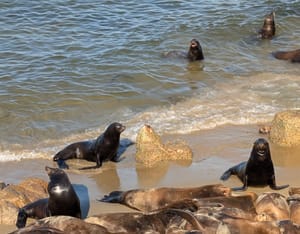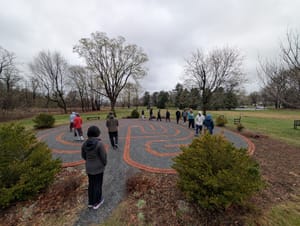Living online, it’s easy to get overloaded. Tools designed to simplify communication, like Twitter and Facebook, somehow wind up turning into extra inboxes you have to keep an eye on lest you miss something. RSS feeds proliferate and multiply. Channels of communication that once seemed intimate (IM, SMS) turn into high-volume streams of data that need to be managed alongside email, news, notes and more.
It’s easy to lose track of the big picture in this flood of data. That’s why systems like Getting Things Done are so appealing to techies: We like the idea that if we take an algorithmic approach, and apply it systematically enough, we can get this flood of information under control.
I’ve been a lackadaisical user of GTD for about five years now, focusing on two basic processing principles: if you can do something in two minutes or less, just do it now; and store everything else in a single place so you always know where to turn for your action lists and notes.
That latter principle is what’s been causing me trouble lately. I use a paper notebook, partly because I relish the satisfaction of physically crossing things off my to-do lists (shouting “Victory!” while you do that is a good way to give yourself even more of a charge, though it will draw looks in the office) and partly because writing things down helps me encode them into my synapses better.
More importantly, I am often in meetings where I need to take notes, whether that’s the daily news budget meeting or an interview with a source. If you’re a technophile like me, I’m sorry to inform you that taking a laptop into situations like that is still generally considered rude, or at the very least odd. It’s also distracting. When interviewing people, in particular, you want your notetaking to be as unobtrusive as possible, and sliding a notebook or tablet PC out of your shoulder bag and tapping away at it is the exact opposite of unobtrusive.
So a paper notebook it is. The problem: My notebook is completely incapable of syncing with my computer. It’s a pain to move notes into a more usable electronic form, and sorting to-do lists requires recopying them from time to time. Worse, my notes aren’t particularly searchable. British scientist Michael Faraday used a complicated indexing and cross-referencing system to make his scientific notebooks more searchable, but I don’t have the time or the inclination to maintain such a system, especially when I believe that computers should be able to do this for me.
Some possible solutions: I could use a system that captures digital “ink” as I scrawl it on the paper, but that requires special paper and seems a little dorky for everyday use. I could photograph or scan every page of my notes, as Microsoft researcher Gordon Bell does, or as MIT professor Ed Boyden recommends doing in his provocative essay “How to Think.”
A new online tool, Evernote, promises to make it easier to keep track of those digital images as well as web clippings, notes, and even email messages. It even does OCR on images you upload, picking out bits of text in any image and turning them into searchable alphanumerics. I just started testing out Evernote, so it’s still too soon for me to say how it works, but I’m excited about its possibilities.
Still, the scanning/photographic part is still a bit awkward: I need to have a scanner on my desk, or somehow improve the lighting and use a better camera. My iPhone’s 2-megapixel sensor isn’t particularly well-suited to digitizing notebook pages, as I have discovered through experimentation.
What I need is a compact camera that takes good pictures of documents, in any light, and then automatically — ideally wirelessly — uploads them to my computer (or perhaps my Evernote account).
And after that, I need a dead-easy system for searching and retrieving those images, along with all my other emails, Word docs, RTF files, and more. I’m sure Google is working on this for a future version of Google Desktop, but in the meantime, any suggestions?


